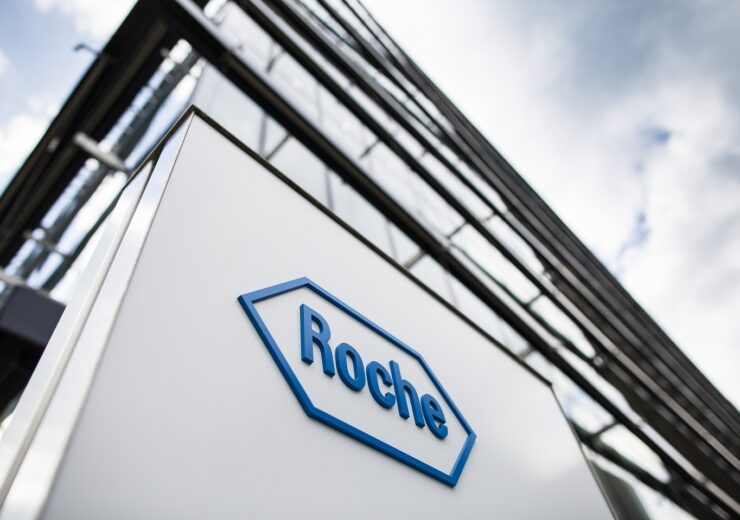Vabysmo inhibits disease pathways that drive neovascular age-related macular degeneration (nAMD) and diabetic macular edema (DME)

FDA approves Roche’s Vabysmo. (Credit: F. Hoffmann-La Roche Ltd.)
Roche has received the US Food and Drug Administration (FDA) approval for Vabysmo (faricimab-svoa) to treat two retinal conditions that cause vision loss.
The drug was indicated for the treatment of neovascular or wet age-related macular degeneration (nAMD) and diabetic macular oedema (DME).
Vabysmo inhibits the disease pathways related to the two retinal conditions by neutralising angiopoietin-2 (Ang-2) and vascular endothelial growth factor-A (VEGF-A).
Ang-2 and VEGF-A are believed to cause vision loss by destabilising blood vessels, which leads to the formation of new leaky blood vessels and a rise in inflammation.
According to Roche, the standard of care for nAMD and DME require eye injections every one to two months.
Its Vabysmo is the first and only FDA-approved injectable eye medicine for nAMD and DME, with flexible dosing regimens based on patient need.
The drug improves and maintains vision from one to four months apart in the first year, after the first four monthly doses, based on the patient’s anatomy and vision outcomes, said Roche.
Roche chief medical officer and global product development head Levi Garraway said: “Vabysmo provides a new approach to treating vision-threatening retinal conditions through a mechanism of action that targets two pathways simultaneously.
“This is our second FDA approval in ophthalmology in recent months, underscoring our commitment to people living with retinal conditions.”
The FDA approval is based on positive results from four Phase 3 studies in nAMD and DME, including identical trials TENAYA and LUCERNE, and YOSEMITE and RHINE.
In the Phase 3 studies, patients treated with Vabysmo achieved non-inferior vision gains versus aflibercept given every two months in the first year.
The drug was generally well-tolerated in all four trials, with a favourable benefit-risk profile, and conjunctival haemorrhage is the most common adverse reaction.
Roche is also conducting an ongoing AVONELLE-X study, an extension of TENAYA and LUCERNE trials, evaluating the safety and tolerability of Vabysmo in nAMD.
Also, the RHONE-X study is an extension of YOSEMITE and RHINE trials, evaluating the long-term safety and tolerability of Vabysmo in the DME population.
In addition, its COMINO and BALATON trials are currently underway, assessing the efficacy and safety of Vabysmo in people with macular oedema after retinal vein occlusion.
Roche said that the European Medicines Agency (EMA) is also currently evaluating its Marketing Authorisation Application (MAA) for Vabysmo to treat nAMD and DME.
